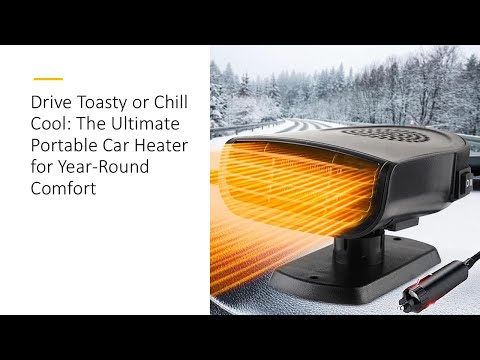Understanding the Need for a Portable Interior Car Heater
As a seasoned automotive technician, I’ve seen firsthand the discomfort and safety issues that arise from driving in a cold car. A functioning car heater is essential, but sometimes it fails, or the vehicle simply doesn’t heat up quickly enough. That’s where a portable interior car heater comes in handy. These devices offer a convenient and often affordable solution to supplement or replace your vehicle’s built-in heating system. They can be especially useful in older cars, during winter emergencies, or for vehicles with inefficient heating systems.
They are not just for comfort; they can also improve visibility by defrosting windows quickly.
Types of Portable Car Heaters
There are primarily two types of portable car heaters available on the market:
- Ceramic Heaters: These heaters use ceramic heating elements, which are known for their efficiency and safety. They heat up quickly and provide a consistent flow of warm air.
- Fan Heaters: These heaters use a simple fan to blow air over a heating element. They are generally less expensive than ceramic heaters but may not be as efficient or durable.
Consider the power source as well. Most portable heaters plug into your car’s cigarette lighter (12V outlet), but some may require a higher voltage or a direct connection to the battery.
Pro Tip: Always check the wattage and amperage requirements of the heater to ensure it’s compatible with your vehicle’s electrical system. Overloading the circuit can blow a fuse or even damage your car’s electrical components.
Factors to Consider When Choosing a Portable Car Heater
Selecting the right portable car heater involves considering several key factors:
Power and Efficiency
The heater’s power output (measured in watts) determines how quickly and effectively it can heat your car’s interior. Higher wattage generally means faster heating, but it also draws more power from your vehicle’s battery. Look for a balance between heating power and energy efficiency.
Safety Features
Safety is paramount. Ensure the heater has built-in safety features such as:
- Overheat protection
- Automatic shut-off
- Tip-over protection
Size and Portability
Consider the size and weight of the heater. You’ll want something that’s compact and easy to store when not in use. A portable heater should be easy to move between vehicles if needed.
Ease of Use
Look for a heater with simple controls and a user-friendly interface. It should be easy to turn on and off, adjust the temperature, and direct the airflow.
Important Note: Never leave a portable car heater unattended while it’s running. Always turn it off and unplug it when you exit the vehicle.
Installation and Usage Tips
Most portable car heaters are incredibly easy to install; Simply plug them into your car’s 12V outlet and position them securely on the dashboard or floor. Make sure the heater is stable and won’t move around while driving.
Here are some additional tips for safe and effective use:
- Ensure the heater’s vents are not blocked by any objects.
- Direct the airflow towards the windshield to defrost it quickly.
- Use the heater in conjunction with your car’s built-in heating system for optimal performance.
- Regularly inspect the heater’s power cord and plug for any signs of damage.






